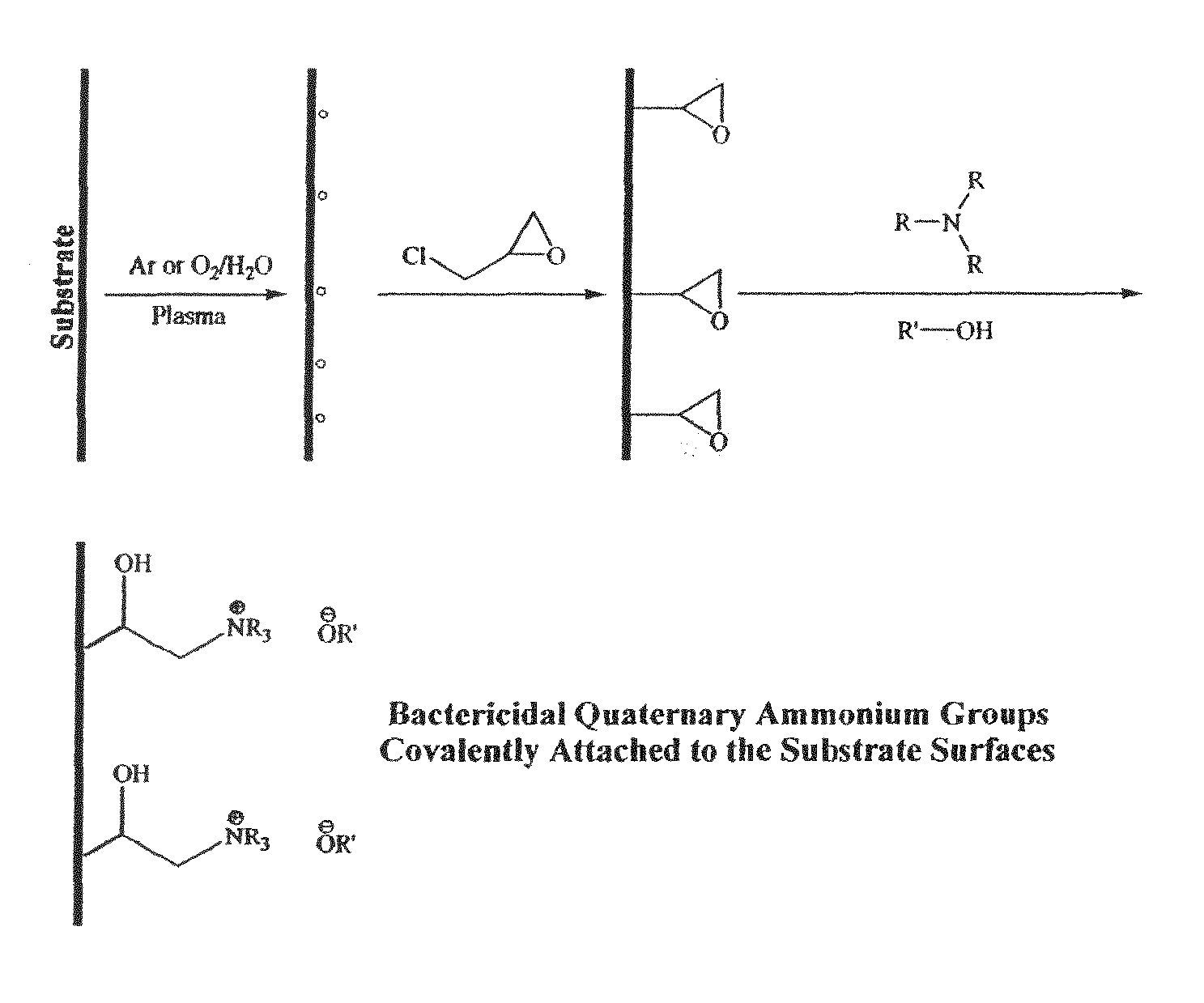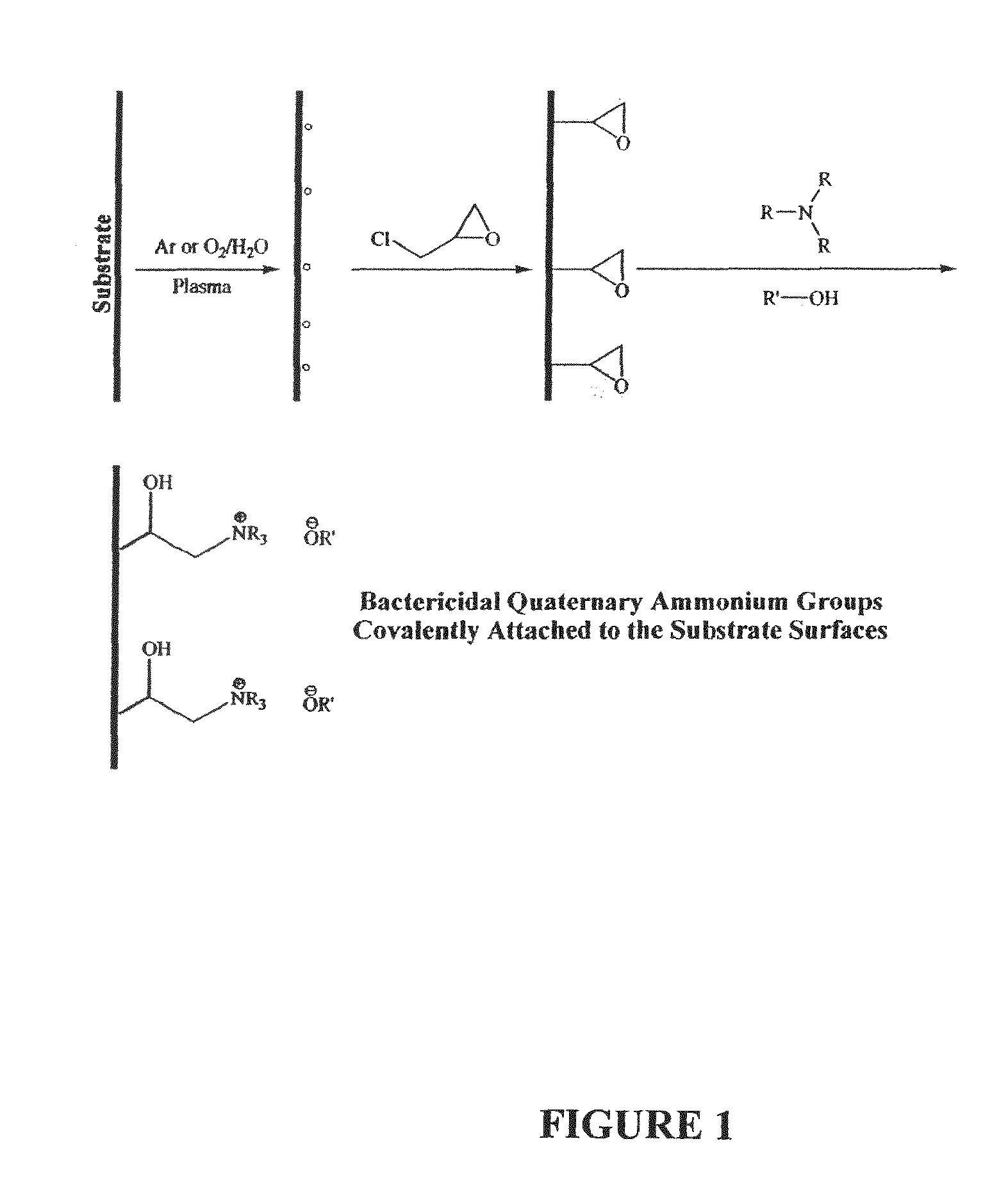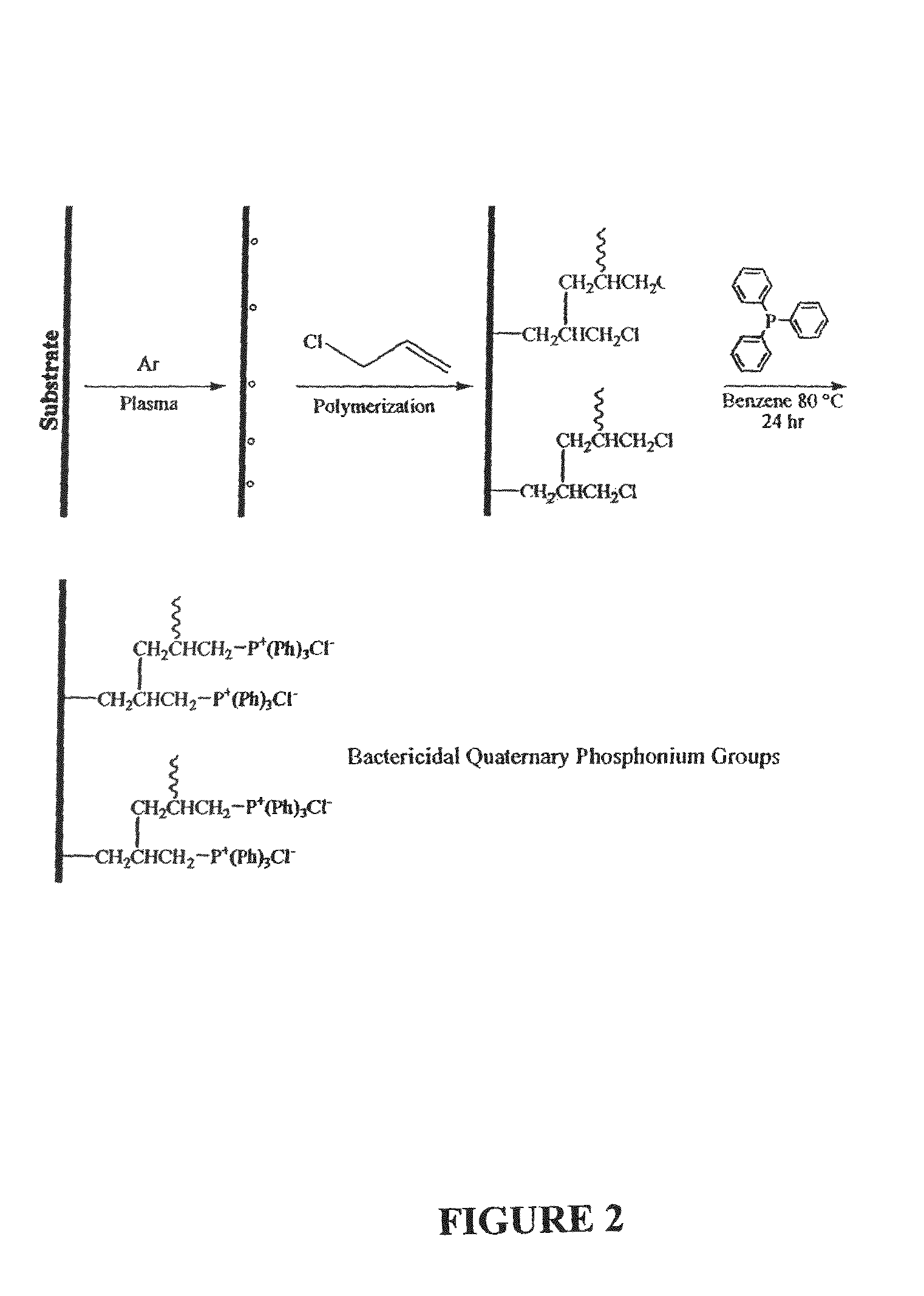Plasma-enhanced functionalization of substrate surfaces with quaternary ammonium and quaternary phosphonium groups
a technology of quaternary ammonium and phosphonium group, which is applied in the direction of group 5/15 element organic compounds, water-setting substance layered products, synthetic resin layered products, etc., can solve the problems of volatile reaction by-products that cannot be easily trapped and neutralized, require only minimal precursor materials for surface functionalization, and require only minimal functionalization. , to achieve the effect of reducing the need for vacuum pumps, reducing the need for volatile reaction by-products, and reducing the need for volatil
- Summary
- Abstract
- Description
- Claims
- Application Information
AI Technical Summary
Benefits of technology
Problems solved by technology
Method used
Image
Examples
example 1
Attachment of Quaternary Ammonium Groups to a Polymeric Substrate
[0047]Substrate surfaces were decorated with covalently-bound quaternary ammonium functionalities by generation of oxirane groups using epichlorhydrin on argon-plasma activated polymer surfaces, followed by in situ gas-phase reaction of the epoxy functionalities with triethylamine in the absence of plasma. Typically, polypropylene samples were exposed to an argon plasma (200 mTorr, 200 W) for one minute followed by in situ reaction with epichlorihydrin at 1 Torr for 30 minutes. Samples were then immersed in a mixture of equal parts triethylamine and sodium hydroxide and one tenth part methanol for 8 hours at 15° C.
[0048]Comparison of deconvoluted HR ESCA spectra from untreated polypropylene surfaces with spectra obtained from epoxy functionalized polypropylene surfaces and quaternary ammonium functionalized polypropylene surfaces demonstrate the presence of oxirane and C—N groups on the functionalized surfaces. Assignm...
example 2
Plasma Deposition of Allyl Chloride onto Substrate Surfaces
[0050]A polymer was formed on the activated substrate surfaces by plasma deposition of allyl chloride. Substrates included 50 Whatman filter paper, cellophane, stainless steel, and glass. The plasma parameters were as follows: Base pressure=32 mTorr; Pressure of allyl chloride=200 mTorr; RF frequency=13.56 MHz; RF power=60 W; treatment time=3 minutes; period=55 ms and 100 ms; plasma-on-time=5 ms; plasma-off-time=95 ms. After plasma deposition, the plasma reactor was evacuated to base pressure and post plasma quenching of free radicals was performed by reacting allyl chloride in situ at 10 Torr for 30 minutes. The samples were then removed, washed repeatedly with benzene and cyclohexane, and stored for further analysis and / or functionalization reactions.
[0051]The influence of certain plasma parameters on the chemical composition of the allyl chloride polymer layer deposited on substrate surfaces was investigated. The impact o...
example 3
Attachment of Quaternary Phosphonium Groups to Substrate Surfaces
[0057]Substrate surfaces that had been treated with plasma-deposited allyl chloride were further decorated with covalently-bound quaternary phosphonium functionalities by ex situ reaction of the allylic chlorine functionalities with triphenylphosphine. The allyl chloride polymer-coated substrates were immersed in a triphenylphosphine / benzene solution and the reaction mixture was stirred for 24 hours at 80° C. Samples were moved, washed with benzene and cyclohexane, and dried.
[0058]ESCA data is shown in Tables 3-4. Table 3 provides the chemical composition of substrates that had not been washed with benzene and cyclohexane prior to plasma deposition of allyl chloride. Table 4 shows similar data for substrates that had been washed prior to plasma deposition. Finally, Table 5 shows the chemical composition of substrates that were washed, treated with plasma-deposited allyl chloride, and further treated with triphenylphosp...
PUM
| Property | Measurement | Unit |
|---|---|---|
| diameter | aaaaa | aaaaa |
| binding energy | aaaaa | aaaaa |
| pressure | aaaaa | aaaaa |
Abstract
Description
Claims
Application Information
 Login to View More
Login to View More - R&D
- Intellectual Property
- Life Sciences
- Materials
- Tech Scout
- Unparalleled Data Quality
- Higher Quality Content
- 60% Fewer Hallucinations
Browse by: Latest US Patents, China's latest patents, Technical Efficacy Thesaurus, Application Domain, Technology Topic, Popular Technical Reports.
© 2025 PatSnap. All rights reserved.Legal|Privacy policy|Modern Slavery Act Transparency Statement|Sitemap|About US| Contact US: help@patsnap.com



